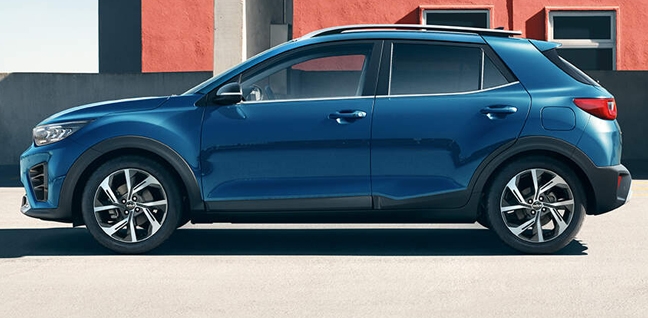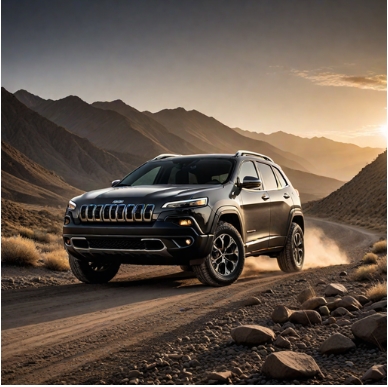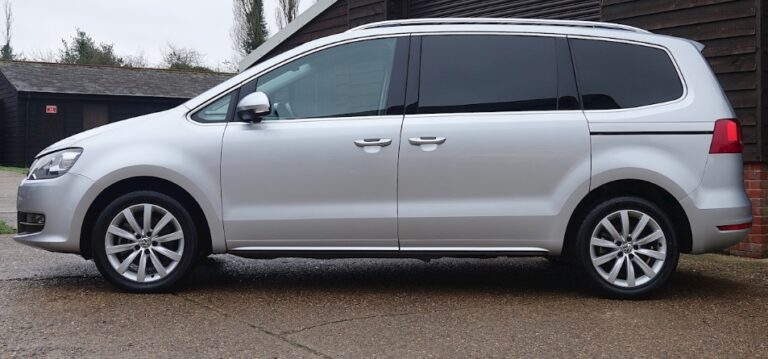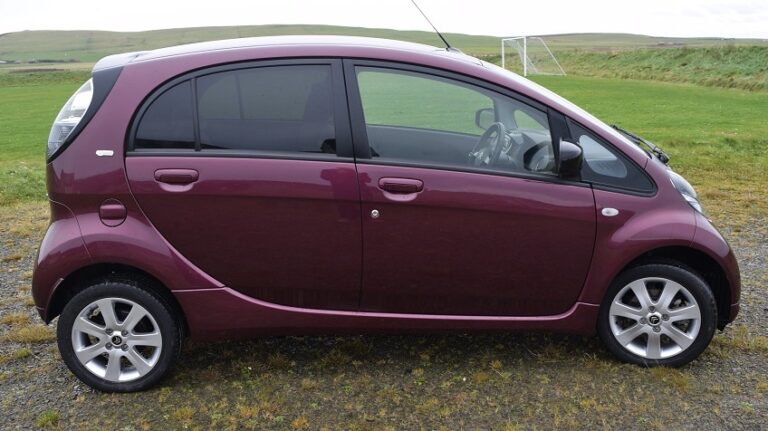The Kia Stonic: Charting the Evolution of a Compact Crossover Contender
In the ever-expanding universe of the B-segment SUV, or subcompact crossover, few models have carved out as distinct and successful a niche as the Kia Stonic. Launched into a market already teeming with established rivals, the Stonic succeeded by adhering to Kia’s proven formula: sharp design, generous standard equipment, a reassuringly long warranty, and accessible pricing. Yet, its story is not one of static success, but of careful and continuous evolution. From its initial debut as a stylish upstart to its current form as a tech-savvy, mildly electrified contender, the Stonic’s journey reflects the rapid changes in consumer demand and automotive technology. This is the evolution of the Kia Stonic.
Genesis: The Arrival (2017)
The Kia Stonic made its global debut in the summer of 2017, entering production for the European market later that year. It was born from a clear market imperative: the explosive growth of the compact crossover segment. Buyers were flocking from traditional superminis and family hatchbacks to vehicles that offered a higher driving position, more rugged styling, and a greater sense of versatility.
Built on the same GB platform as the fourth-generation Kia Rio supermini, the Stonic was designed to be the Rio’s more adventurous and fashionable sibling. The name itself was a portmanteau of “Speedy” and “Tonic,” meant to evoke a sense of youthful energy and fun.
Design and Philosophy: Overseen by Kia’s then-Chief Design Officer, Peter Schreyer, the Stonic’s design was a key differentiator. It sported a lower, sleeker roofline than many of its more upright competitors, giving it a sportier, more hatchback-like profile. Signature Kia elements were present, including the “Tiger Nose” grille, but it was the customization that truly made it stand out. Kia heavily marketed the two-tone paint options, with a contrasting roof colour available in shades like black, orange, and red. This allowed for over 20 different colour combinations, a clear appeal to a younger, style-conscious demographic.
Initial Powertrains (2017-2020): At launch, the Stonic offered a straightforward range of petrol and diesel engines, designed to cater to a variety of driving needs and budgets.
1.0 T-GDi (Turbocharged Gasoline Direct Injection): The headline engine was Kia’s three-cylinder turbocharged petrol unit, producing 118 bhp (120 PS). Mated to a six-speed manual gearbox, it offered a punchy, responsive driving experience that matched the car’s sporty character.
1.4 MPI (Multi-Point Injection): A naturally aspirated four-cylinder petrol engine was offered as a more affordable entry point. Producing 98 bhp (100 PS), it was focused on reliability and lower running costs rather than outright performance.
1.6 CRDi (Common Rail Direct Injection): For high-mileage drivers, a 1.6-litre four-cylinder turbodiesel was available. This engine produced 108 bhp (110 PS) and was prized for its strong mid-range torque and excellent fuel economy.
Inaugural Trim Levels (UK Market Focus): The UK, a key European market, launched the Stonic with a simple, two-tier trim structure.
‘2’: The entry-level model was far from spartan. Standard equipment included 17-inch alloy wheels, air conditioning, all-round electric windows, rear parking sensors, roof rails, and a 7-inch touchscreen infotainment system with Apple CarPlay and Android Auto connectivity. This generous specification was a major selling point against rivals who often charged extra for such features.
‘First Edition’: This range-topping launch model added a wealth of features. It was distinguished by its standard two-tone paint, a larger 8-inch touchscreen with satellite navigation, a smart key with a push-button start, heated front seats and steering wheel, and an enhanced suite of safety features including Autonomous Emergency Braking (AEB), Lane Departure Warning System (LDWS), and Blind Spot Detection.
Over the next couple of years, this structure evolved slightly. The ‘First Edition’ was eventually replaced by the ‘3’ and ‘4’ trims, which largely mirrored its high-specification level, with the ‘4’ adding features like heated rear seats and leather upholstery. Kia also introduced special editions like the ‘Maxx’ and ‘Mixx’, which typically offered unique colour schemes and equipment bundles for added value.
The Mid-Life Refresh: Smarter and Electrified (2020)
By 2020, the automotive landscape was shifting rapidly. Stricter emissions regulations (WLTP), a growing demand for in-car connectivity, and the universal push towards electrification prompted Kia to give the Stonic a significant mid-life update. The facelifted model, revealed in late 2020 for the 2021 model year, was a textbook example of targeted evolution—honing the car’s strengths while addressing the technological demands of a new decade.
Subtle Styling, Significant Tech: Visually, the changes were subtle. The most notable update was the introduction of new full LED headlights with a distinctive daytime running light signature. New 17-inch alloy wheel designs were introduced, and the colour palette was refreshed with new hues and contrasting roof options.
The real evolution happened inside and under the bonnet.
Interior and Connectivity: The cabin received a major technological boost. The 7-inch touchscreen in the base model was replaced by a higher-resolution 8-inch display as standard across the range. Higher-spec models featured the new ‘Phase II’ UVO Connect telematics system. This brought the Stonic into the modern era of connected cars, offering live traffic information, weather forecasts, points of interest, and integration with a smartphone app for functions like sending destinations to the car’s navigation system.
The Powertrain Revolution: Enter Mild-Hybrid: The most profound change was the introduction of Kia’s new ‘Smartstream’ engine family with 48V mild-hybrid (MHEV) technology.
1.0 T-GDi 48V MHEV: The existing 1.0-litre turbo engine was re-engineered. The MHEV system paired the engine with a small 48-volt lithium-ion battery and a Mild-Hybrid Starter-Generator (MHSG) unit. This system recuperates energy during deceleration and braking, storing it in the battery. It then uses this energy to provide an electric torque boost during acceleration, reducing the load on the petrol engine and therefore cutting emissions and improving fuel economy. The system also enables a ‘sailing’ function, where the engine can switch off entirely while coasting to a stop. This engine was offered in two states of tune: 99 bhp (100 PS) and 118 bhp (120 PS).
intelligent Manual Transmission (iMT): Paired with the new MHEV engine was another innovation: the iMT. This was a ‘clutch-by-wire’ manual gearbox. It operated like a conventional manual, but the clutch was controlled electronically rather than by a mechanical linkage. This allowed the MHEV system to disengage the engine from the transmission and switch it off earlier when coasting, further enhancing efficiency. A seven-speed dual-clutch automatic transmission (7DCT) also remained an option.
Concurrently, the non-hybrid 1.4 MPI was replaced by a new 99 bhp non-hybrid 1.0 T-GDi for the entry-level model, and the 1.6-litre diesel engine was quietly discontinued in the UK and many other European markets due to declining demand.
A Sporty New Identity: The GT-Line (2021-Present)
The 2020 facelift also introduced a pivotal new trim level that would come to define the Stonic’s image: the GT-Line. Capitalizing on the success of GT-Line variants on other models like the Ceed and Sportage, this trim gave the Stonic a distinctly sporty and aggressive aesthetic.
GT-Line and GT-Line S: The GT-Line trim wasn’t just about badges; it featured a comprehensive design overhaul.
Exterior: It included a unique front bumper with integrated LED fog lamps, a sportier rear bumper with faux dual exhaust finishers, and a gloss black and chrome-trimmed grille.
Interior: The cabin was enhanced with a flat-bottomed, perforated leather D-cut steering wheel, carbon-fibre effect dashboard trim, and exclusive black cloth and faux leather seats with contrast piping and stitching.
The trim hierarchy was re-shuffled to accommodate this new sporty variant, typically settling into this structure for the UK market:
‘2’: Remained the well-equipped entry point, now with the 8-inch screen and the non-hybrid 99 bhp 1.0 T-GDi engine.
‘GT-Line’: Positioned as the sporty mid-range model. It came with the 99 bhp MHEV powertrain and added the full GT-Line body kit, LED headlights, and sporty interior touches.
‘Connect’ (or ‘3’): This trim sat parallel to the GT-Line, focusing on comfort and technology rather than sporty looks. It typically featured the 99 bhp MHEV engine, satellite navigation via the UVO Connect system, heated seats, and climate control.
‘GT-Line S’: This became the new flagship model, combining the sporty looks of the GT-Line with the highest level of technology. It was exclusively available with the more powerful 118 bhp MHEV powertrain and added advanced driver-assistance systems like Smart Cruise Control (on DCT models), Blind Spot Collision Warning, and premium features like heated rear seats.
.
RepairSurge Online Repair Manuals Replace Bulky Books With Reliable Digital Information!
Faster And Cheaper Than Traditional Printed Manuals, Users Get Instant Access To The Repair Information They Need For Any Car, Truck, Van or SUV:
.
Conclusion: A Journey of Adaptation and Success
The evolution of the Kia Stonic from 2017 to the present day is a compelling case study in how to succeed in a fiercely competitive automotive segment. It began life as a stylish and value-driven proposition, leveraging its eye-catching design and generous equipment to make an immediate impact.
The crucial 2020 facelift demonstrated Kia’s ability to adapt and innovate. By introducing mild-hybrid technology, the Stonic became more efficient and future-proofed against tightening emissions standards. The updated infotainment and connectivity features kept it relevant for a tech-savvy audience, while the introduction of the GT-Line trim injected a new level of desirability and sporting appeal.
Throughout its production years, the Stonic has consistently offered a broad range of models—from the sensible ‘2’ to the feature-packed ‘Connect’ and the aspirational ‘GT-Line S’—ensuring there is a variant to suit different priorities and budgets. It has evolved from a simple crossover into a sophisticated, efficient, and highly connected vehicle, all while retaining the core attributes of style, value, and reliability that defined it from the very beginning. The little crossover that could has proven itself to be not just a tonic for the market, but a true cornerstone of Kia’s modern lineup.







